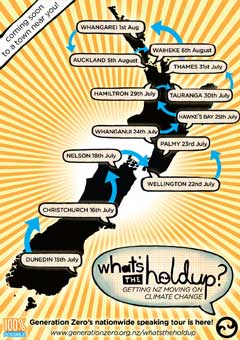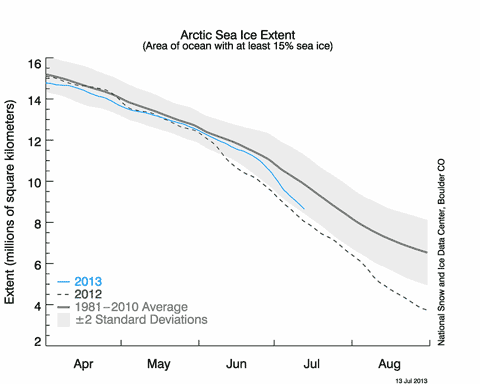 What are the prospects for the shorelines of Pegasus Bay as sea level rises, river flows change, and wave directions change? Someone who really knows her erosion from accretion is Sonny Whitelaw, the Hurunui Council’s biodiversity ambassador ((And SF author, writer, photojournalist, and Hot Topic reader.)). She’ll be talking to the Food For Thought Hurunui group on Monday night at the Memorial Library in Amberley, kicking off at 7-30pm. This is a presentation that Sonny has already given to the Waimakariri and Hurunui Councils, and comes highly recommended — especially if you live in or near a Canterbury coastal community.
What are the prospects for the shorelines of Pegasus Bay as sea level rises, river flows change, and wave directions change? Someone who really knows her erosion from accretion is Sonny Whitelaw, the Hurunui Council’s biodiversity ambassador ((And SF author, writer, photojournalist, and Hot Topic reader.)). She’ll be talking to the Food For Thought Hurunui group on Monday night at the Memorial Library in Amberley, kicking off at 7-30pm. This is a presentation that Sonny has already given to the Waimakariri and Hurunui Councils, and comes highly recommended — especially if you live in or near a Canterbury coastal community.
Month: July 2013
NZ PM BP: John Key and the Fellowship of the Drill – beyond parody
 The growing disconnect between the NZ government’s promotion of New Zealand as a 100% Pure tourist destination, and its desire to see more offshore oil and gas exploration and increased mining for coal and minerals is certainly attracting attention around the world. Graham Readfearn’s article New Zealand pushing plans to drill Middle-earth as Hobbit filming ends is top environment story on the Guardian web site today. Readfearn riffs on the completion of filming for the last part of the Hobbit trilogy, set against a frankly astonishing promotional video by PM John Key, in which he waxes lyrical about our beautiful country, and then describes how he’s committed to ruining it. Have a look: it is — as Greenpeace NZ noted — beyond parody.
The growing disconnect between the NZ government’s promotion of New Zealand as a 100% Pure tourist destination, and its desire to see more offshore oil and gas exploration and increased mining for coal and minerals is certainly attracting attention around the world. Graham Readfearn’s article New Zealand pushing plans to drill Middle-earth as Hobbit filming ends is top environment story on the Guardian web site today. Readfearn riffs on the completion of filming for the last part of the Hobbit trilogy, set against a frankly astonishing promotional video by PM John Key, in which he waxes lyrical about our beautiful country, and then describes how he’s committed to ruining it. Have a look: it is — as Greenpeace NZ noted — beyond parody.
[youtube http://www.youtube.com/watch?v=qQrBly7xMjs&w=480]
Readfearn’s not the only one to notice: climate campaigner Bill McKibben tweeted “NZ doing its best to become a junior league petrostate, talk about bad timing” to draw attention to a 350.org blog post about Key’s tasteless little video.
The foolishness of trying to build an extraction economy around fossil fuels at a time when the carbon bubble — the over-valuation of carbon reserves by oils and coal companies — is beginning to gain traction in financial markets is all too obvious. Investing in assets that will be stranded by the inevitability of action on climate change is a strategic nonsense.
Unfortunately that’s part for the course for a government locked into an outdated set of political ideas, wedded to a world-view that considers action on emissions optional. Unless they wake up and see the world changing around them, they will find themselves as stranded as the tax payer funds they plan waste by subsidising fossil fuel exploration and extraction.
Arctic sea ice time bomb ticking: the bang’s gonna be huge
 Reading this press release about a new paper in Palaeogeography, Palaeoclimatology, Palaeoecology spoiled my day. It might not be obvious to a casual reader just glancing through the morning news — but a couple of paragraphs leapt out at me:
Reading this press release about a new paper in Palaeogeography, Palaeoclimatology, Palaeoecology spoiled my day. It might not be obvious to a casual reader just glancing through the morning news — but a couple of paragraphs leapt out at me:
Atmospheric carbon dioxide concentrations recently reached 400 parts per million for the first time since the Pliocene Epoch, three million years ago. During this era, Arctic surface temperatures were 15-20 degrees Celsius warmer than today’s surface temperatures.
Ballantyne’s findings suggest that much of the surface warming likely was due to ice-free conditions in the Arctic. That finding matches estimates of land temperatures in the Arctic during the same time. This suggests that atmospheric carbon dioxide concentrations of 400 ppm may be sufficient to greatly reduce the spatial extent and seasonal persistence of Arctic sea ice.
In other words, losing Arctic sea ice brings huge warming to the lands around the Arctic Ocean. This is extremely bad news for a number of reasons:
Continue reading “Arctic sea ice time bomb ticking: the bang’s gonna be huge”
Generation Zero’s NZ speaking tour asks: What’s the holdup?
 Youth-led climate campaigners Generation Zero have just finished the first week of their nationwide What’s The Holdup? speaking tour ((Apologies for not posting in time to promote this week’s South Island events.)) — an attempt to start a national conversation about action to reduce emissions. Here’s what the group has to say about the tour:
Youth-led climate campaigners Generation Zero have just finished the first week of their nationwide What’s The Holdup? speaking tour ((Apologies for not posting in time to promote this week’s South Island events.)) — an attempt to start a national conversation about action to reduce emissions. Here’s what the group has to say about the tour:
In between extreme weather and rising oil prices, countries around the world are making a shift towards renewable energy – but New Zealand is lagging behind. Tackling climate change for many Kiwis feels like an impossible task. But together, we can create the movement to change this and bring forth a thriving New Zealand we are proud to hand on to future generations.
The facts say that it’s 100% Possible to move beyond fossil fuels – but we need leadership at every level, from entrepreneurs and business leaders, from communities, and from the politicians we elect.
Generation Zero will initiate a conversation with the country. New Zealanders young and old are invited to hear young people and experts talk about the solutions to climate change, and what each one of us can do to make a difference.
It’s 100% possible to create a thriving New Zealand beyond fossil fuels. So what’s the holdup?
Here’s the schedule for the remainder of the tour:
- Wellington – Monday 22nd July, Ilot Theatre, Town Hall 111 Wakefield Street
- Palmerston North – Tuesday 23rd July, Massey Uni, Ag Hort 1 Lecture Theatre
- Wanganui – Wednesday 24th July, Wanganui Museum, Davis Theatre
- Havelock North – Thursday 25th July, Havelock North High School Auditorium
- Tauranga – Tuesday 30th July, Bongard Centre, lecture theatre 104, the Bongard Centre, 200 Cameron Rd
- Hamilton – Tuesday 30th July, Waikato University Lecture Theatre S1.04
- Thames – Wednesday 31st July, Life Equip Church, 507 MacKay St
- Whangarei – Thursday 1st August, Whangarei Girls High School theatre
- Auckland – Monday August 5th, Auckland Uni Engineering building, room 401
- Waiheke – Tuesday August 6th, venue Onetangi Community Hall
All events start at 7pm. For more information, sign up here.
Arctic summer 2013: fragile ice pack feeling the pressure
Looking down on the North Pole from satellite, NASA’s Arctic mosaic image for July 14 shows an unusually cloud-free view of the sea ice covering the Arctic Ocean. Click on the image to see the bigger original, and to zoom in on interesting regions. So far this year the sea ice melt has lagged behind last year’s record-setting performance, but in the last few weeks the rate of melt has increased significantly and the two years are moving closer together.

The NSIDC’s sea ice extent graph (above, for July 13) clearly shows the increase in melt, but there is still a substantial gap — over 0.5 million km2 — between the two years. This is, however, the time of year when the melt season goes into overdrive, with sunshine pouring energy into the Arctic 24 hours a day.
Continue reading “Arctic summer 2013: fragile ice pack feeling the pressure”
